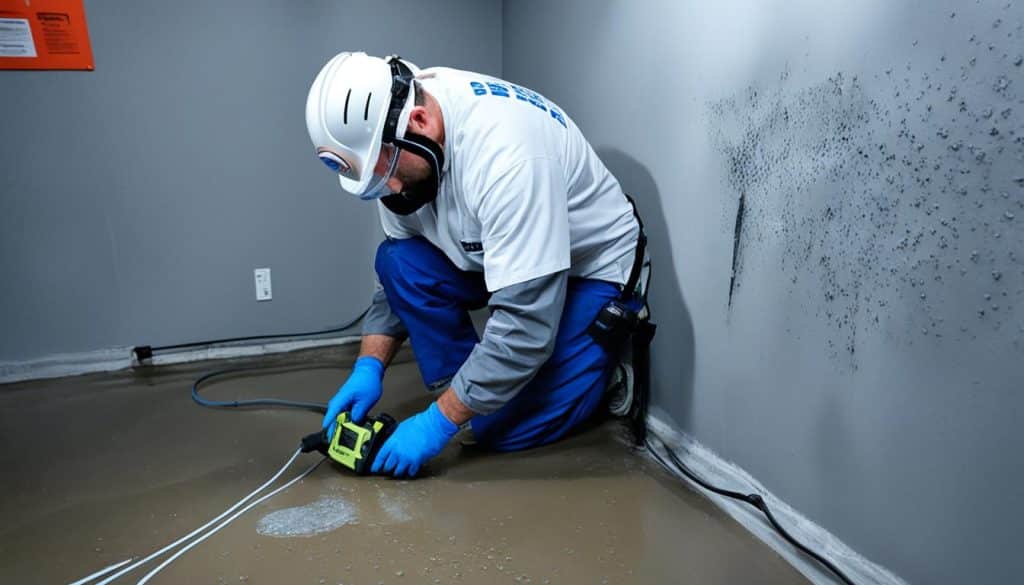In the ever-evolving landscape of the construction industry in the United States, a silent war is being waged between builders and buyers. This conflict stems from a fundamental, mutually exclusive goal: builders want to maximize profits, while buyers want to get the best value for their money. Unfortunately, How Construction has Changed talks about the pursuit of profit often leads to cost-cutting measures that compromise the quality and longevity of homes, leaving buyers with hidden costs and long-term issues that could have been avoided.
Array of Solutions, a trusted name in mold removal in Greenville South Carolina since 2007, stands ready to tackle your mold woes. With our expert mold inspection Greenville services and EPA-Registered credentials, we’re equipped to detect, remove, and prevent mold growth in your home or business.
Table of Contents
How Construction has Changed: The Shrinking Dimensions of Building Materials
One of the most glaring examples of how the construction industry has changed is the reduction in the size of standard building materials. Take the humble two by four, a staple in residential construction. Once upon a time, a two by four was precisely that—two inches by four inches in dimension. Today, however, it measures closer to one and a half inches by three and a half inches (1 1/2″ x 3 1/2″). This change, seemingly small, is indicative of a broader trend in construction: the push to reduce material costs to increase profits.
This trend isn’t unique to construction. Across industries, from bicycles to electronics, we see a relentless drive to cut corners and save money. Consider the iconic Schwinn bicycle, once a symbol of American craftsmanship, now manufactured in China. The reason? It’s cheaper to produce overseas, where labor and materials cost less, translating to higher profit margins for manufacturers. Similarly, in the construction industry, cheaper materials and faster production methods often result in lower-quality homes.

The Problem with Crawlspaces
One of the most cost-effective yet problematic innovations in modern home construction is the use of dirt crawlspaces. Builders favor this design because it saves money and speeds up the construction process. However, what is initially a cost-saving measure for the builder and buyer often leads to long-term inefficiencies and significant additional expenses.
Crawlspaces are intended to provide a buffer between the home and the ground, helping to prevent moisture from entering the home’s living spaces. But in reality, they often do the opposite. A vented dirt-floor crawlspace can trap moisture, leading to a host of problems, including mold growth, wood rot, and pest infestations. Over time, these issues can compromise the structural integrity of the home and create an unhealthy living environment.
The inefficiency of a dirt crawlspace is counterproductive to a home’s overall synergy, ergonomics, and practicality. Homeowners often find themselves spending far more on heating and cooling costs due to the poor insulation properties of a vented crawlspace. Moreover, the presence of moisture and pests in the crawlspace can lead to costly repairs that far outweigh any initial savings on the home’s construction.
The Hidden Costs of a Neglected Crawlspace
Having inspected hundreds of crawlspaces over the years, I can attest to the fact that most of them are, quite frankly, a mess. Smelly, nasty, wet, infested, neglected, dangerous, and toxic—these are just a few of the words that come to mind when describing the typical crawlspace. The sad truth is that many homeowners are unaware of the condition of their crawlspace until it’s too late.
The reason for this is simple: most home warranties expire long before crawlspace problems become apparent. By the time the crawlspace starts to become septic—meaning it’s filled with harmful bacteria and mold—the builder is no longer accountable for the issues caused by their construction methods. The homeowner is left to deal with the consequences, which often include extensive and expensive repairs.
If the public had a greater understanding of the long-term costs associated with vented dirt-floor crawlspaces, it’s likely that they would be outlawed. Having a vented dirt crawlspace is akin to leaving your windows open during the coldest months of winter, or standing in the path of an oncoming train—it’s simply counterproductive and dangerous.

Protect Your Home and Your Investment
In conclusion, the construction industry has changed in ways that are not always in the best interest of the homeowner. Builders are focused on maximizing profits, often at the expense of quality and long-term durability. As a result, homeowners need to be vigilant and proactive in maintaining their homes, particularly when it comes to the condition of their crawlspace.
If you don’t know what’s lurking in your crawlspace, it’s time to find out. Call Doug Whitehead at Arrayofsolutions.com today for a comprehensive inspection. Whether you’re selling your home and facing a CL100 test, or simply want peace of mind, a thorough crawlspace inspection can save you time, money, and an enormous amount of aggravation. Don’t let hidden issues in your crawlspace turn your dream home into a nightmare.
Till later,
Douglas Whitehead;
Owner; ‘Arrayofsolutions.com’
